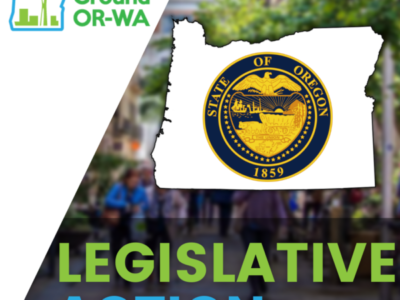The Henry George vision of earth sharing and economic justice is worthy of implementing. But a utopian megalopolis?
The Diapers.com Guy Wants to Build a Utopian Megalopolis
“Let the people own the land!” says Marc Lore. “But in a capitalistic way.”
By Joshua Brustein
Featured in Bloomberg Businessweek, Sept. 6, 2021
Excerpts:
In an American economy of winners and losers, it’s clear where Marc Lore falls. He founded two e-commerce startups and sold them for $550 million and $3.3 billion before spending the last five years running Walmart Inc.’s online shopping division. Since announcing his departure from Walmart in January, Lore is on a victory lap that seems to include doing everything short of climbing into a rocket and shooting himself into space. Lore has found time to ponder what he sees as the biggest challenge facing the U.S.—the country’s massive wealth gap. “Most civilizations in history at some point fall, right?” he says. “This is going to bring down America.”
Lore explained how everything changed for him several years ago when he read Progress and Poverty, the 1879 manifesto by the economist and journalist Henry George. The book’s core argument is that private land ownership is to blame for rising inequality. Land in unoccupied areas is often worthless, George wrote, but gains value when people move nearby. It’s society that’s creating this wealth, but the benefits accrue only to whoever happened to own the land in the first place, giving them the ability to get rich without providing anything worthwhile.
George argued that heavily taxing the value of land would increase both economic efficiency and social justice. His book was a 19th century blockbuster and has maintained a steady fan base ever since. His adherents argue that a land value tax could enable the elimination of most other taxes, including traditional property taxes, which assess improvements on the land in addition to the land itself. This idea has never been put into practice on a large scale, but it’s gone through something of a resurgence in the past decade, gaining praise from economists such as Joseph Stiglitz.
Lore is particularly attracted to the strain of Georgism that involves creating a trust that holds the land in a community and uses the income it generates to fund social services. From that idea, he’s come up with the modest proposal to start a private foundation, buy 200,000 acres or so of land, probably somewhere in the American West, and build a 5 million-person city from the ground up—a Georgist utopia that will serve as a demonstration project for a new, fairer phase of capitalism.
“If you went into the desert where the land was worth nothing, or very little, and you created a foundation that owned the land, and people moved there and tax dollars built infrastructure and we built one of the greatest cities in the world, the foundation could be worth a trillion dollars,” Lore says. “And if the foundation’s mission was to take the appreciation of the land and give it back to the citizens in the form of medicine, education, affordable housing, social services: Wow, that’s it!”
Lore conducted a survey of his LinkedIn followers to help him pick a name. They settled on Telosa, which derives from an ancient Greek word meaning “highest purpose.” He’s hired a team that includes a transportation planner, an engineer, and an urban historian. His real estate consulting firm has narrowed the search for a site down to about six states and has even identified some specific 50,000-plus-acre parcels in Nevada—whose governor has proposed rules to encourage new cities—as potential sites. In June, Lore commissioned Bjarke Ingels, one of the world’s most famous architects, to be Telosa’s chief architectural designer.
Lore acknowledges this is all a bit preposterous. He’s rich but not rich enough to fund such a large development project by himself, and he can’t say with any specificity how he’d get the money. He hasn’t acquired land or water rights, precursors to undertaking the daunting task of persuading people to leave real cities for his hypothetical one. Nor has Lore figured out how the foundation would operate or persuaded local officials to grant it the power it’d likely need to function. Clearing those hurdles would get Telosa to the point where Lore could see whether his unproven economic model would actually succeed.
Telosa taps into a long-running—and mostly unsuccessful—tradition of trying to improve urban life by starting new cities from scratch. Sarah Moser, an associate professor of geography at Montreal’s McGill University who studies planned cities, has identified about 150 greenfield city-building projects being planned around the world, backed either by governments or private interests.
Sometimes the plans have come from governments—the national capitals of both the U.S. and Brazil were planned and built from scratch, and the single most ambitious project under way now may be Saudi Crown Prince Mohammed bin Salman’s plans for Neom, a smart city in Saudi Arabia.
Despite some big talk, the tech industry’s track record for building cities isn’t great. Perhaps the most prominent attempt was Quayside, a plan by Alphabet Inc.-affiliated Sidewalk Labs to turn a 12-acre plot in Toronto into a demonstration project for the future of urban life. The company abandoned the idea last year and is now focused on building software products for urban planners.
Planning for Telosa began on a muggy day in early July at the Brooklyn, N.Y., headquarters of [the] firm, Bjarke Ingels Group (BIG). BIG’s architects started with the Garden City movement, a tradition of urban planning drawing heavily on the ideas of George. The father of the Garden City was Ebenezer Howard, an English urban planner who envisioned self-sufficient communities with concentric rings of development surrounded by greenbelts. The land for Howard’s first garden city, Letchworth, was held in trust, with the income from leases reinvested into public improvements. Letchworth, located near London, still exists and has about 34,000 residents.
Lore’s plans for Telosa are far more expansive. BIG’s staff explained how the city will be built in several stages over the next 40 years. The first phase, targeted for completion in 2030, consists of 50,000 people living in a circular neighborhood of about 1,500 acres—an area that would be easily traversable on foot. Once this zone is populated, the city will expand by encircling it with subsequent layers of 1,500-acre neighborhoods.
Comment:
This is not the first time a Georgist utopia has been conceived. Followers of Henry George established Arden, Delaware in 1900, where all residential land is owned by a trust, leasing the land to residents who pay rent only on their leaseholds. The trust itself pays property taxes to the county. Arden has prospered as a lively community. Another single tax ‘colony’ is Fairhope, Alabama (1894). Altoona, Pennsylvania in 2013 became the only US city that has a pure land-value tax. Internationally, large city-states like Hong Kong and Singapore have successfully adopted the land lease system.
But Marc Lore is taking an enormous risk building a new city at that scale and in water scarce Nevada. This could very well go the way of the futuristic Quayside, squandering millions of dollars, profiting only financial and design consultants. Mr. Lore might have more success by setting his sights on political action at the multi-state level, lobbying legislators to implement George’s land value tax model. Help fund existing Georgist organizations who are already engaging in this enterprise, thereby spreading the benefits of economic efficiency and social justice to cities and towns throughout the nation.
Tom Gihring, Research Director, Common Ground OR-WA




